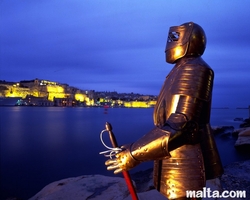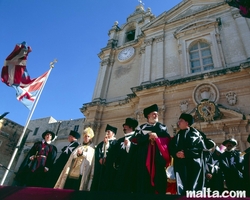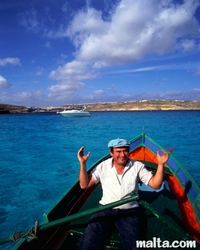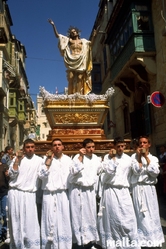The Culture of Malta explained
A mixture of societies of cultures over long centuries
The culture of Malta is the result of the many different societies that came in contact with the Maltese Islands throughout history, including cultures of neighbouring countries, cultures of nations that ruled Malta for long centuries, and other influences from tourism and media.
The culture of modern Malta is a rich one, composed of traditions, beliefs and practices that resulted out of a long process of adaptation and assimilation of different societies over time. Subjected to these historic processes, the Maltese culture also incorporated the linguistic and ethnic admixture that defines who the Maltese people are.
The Maltese culture of today can be effectively defined as being Latin European with influences from the British period of history quite evident. Arab influences are very apparent in the Maltese language and perhaps a bit in the Mediterranean diet, but they’re not seen anywhere else. Latin European influences remain predominant mainly because of the island’s rulers in the past eight centuries as well as the fact that Malta shares religious beliefs and many traditions with its Sicilian and Southern European neighbors.
Semitic influence
Malta was inhabited by the Phoenicians from around 700 BC who exploited the shelter of Malta’s harbours. By 480BC, as Carthage was growing its empire in the Western Mediterranean, Malta became a Punic colony. Exposure to semitic influences continued to an during the 268-year rule of the Knights of St. John, in part because of trade, but mainly because of the large numbers of slaves present in Malta during the 17th and 18th centuries.
Dramatic incidents related to piracy and slavery remain with us till today, reflected in Maltese folklore, superstitions, beliefs, sayings and in the Maltese literature, with works such as Inez Farrug written by Anton Manwel Caruana in 1889 (1889) and the traditional ballad of l-Gharusa tal-Mosta, which narrates the kidnap of a Maltese bride by Turkish pirates.
Influences of Catholicism on Maltese culture
It is said that in Malta, Gozo, and Comino there are around 365 churches; or one church for every day of the year. Every town has its parish church as the focal point and a main source of civic pride. This pride is beautifully manifested during festas; celebrating the day of the patron saint of each parish with marching bands, processions, fireworks and other festivities.
According to tradition, and as recorded in the Acts of the Apostles, the Church in Malta was founded by St. Paul in 60AD, following his shipwreck on these Islands. The earliest Christian place of worship in Malta is known to be St. Paul's Grotto – the place where St. Paul was imprisoned during his stay on Malta. Evidence of Christian practices and beliefs during Roman persecution can be found in the many catacombs that lie underground around Malta. There are also a number of cave churches, including the grotto at Mellieħa, where St. Luke is said to have painted a picture of the Madonna.
Under the rulings of the Norman, Spanish and the Knights, Malta became the devout Catholic nation it is today. It is worth noting that the Inquisition had a very long history in Malta – established by the Pope in 1530, with the last Inquisitor departed in 1798, after the Knights surrendered to the forces of Napoleon Bonaparte.
Influences of migration
Malta’s position as a maritime nation paved the way for extensive interaction between Maltese seamen and their colleagues around the Mediterranean. Moreover, by the mid-19th century, the Maltese had already a history of migrating to other places, including Egypt, Greece, Sicily and other islands in the Mediterranean. Intermarriages where quite common, while migrants would return to Malta from time to time, importing new customs and traditions that been absorbed into mainstream Maltese culture as time went by.
Migration was heavy once again after World War II, where around a third of the Maltese population left to start a new life in faraway lands, namely Australia, Canada, UK and US. In the 1990s many Maltese and second generation migrants returned to Malta. Recent years have seen an increase in the number of foreign expatriates moving to Malta, creating an increasingly cosmopolitan environment in the towns and around Malta.
A few basics of the Maltese culture:
- The Maltese culture is a combination that comes alive by different societies that interacted with the Maltese people over time. Read about how the Maltese culture was influenced by each ruler in the history of Malta.
- The Maltese are a very devout Catholic nation, and religion still has an important place in the modern Maltese society. Read about Religion in Malta
- Maltese people spend a lot of time and energy discussing politics. Especially as the general elections draw closer.
- The Maltese language is the only semitic language written in Latin Alphabet.








